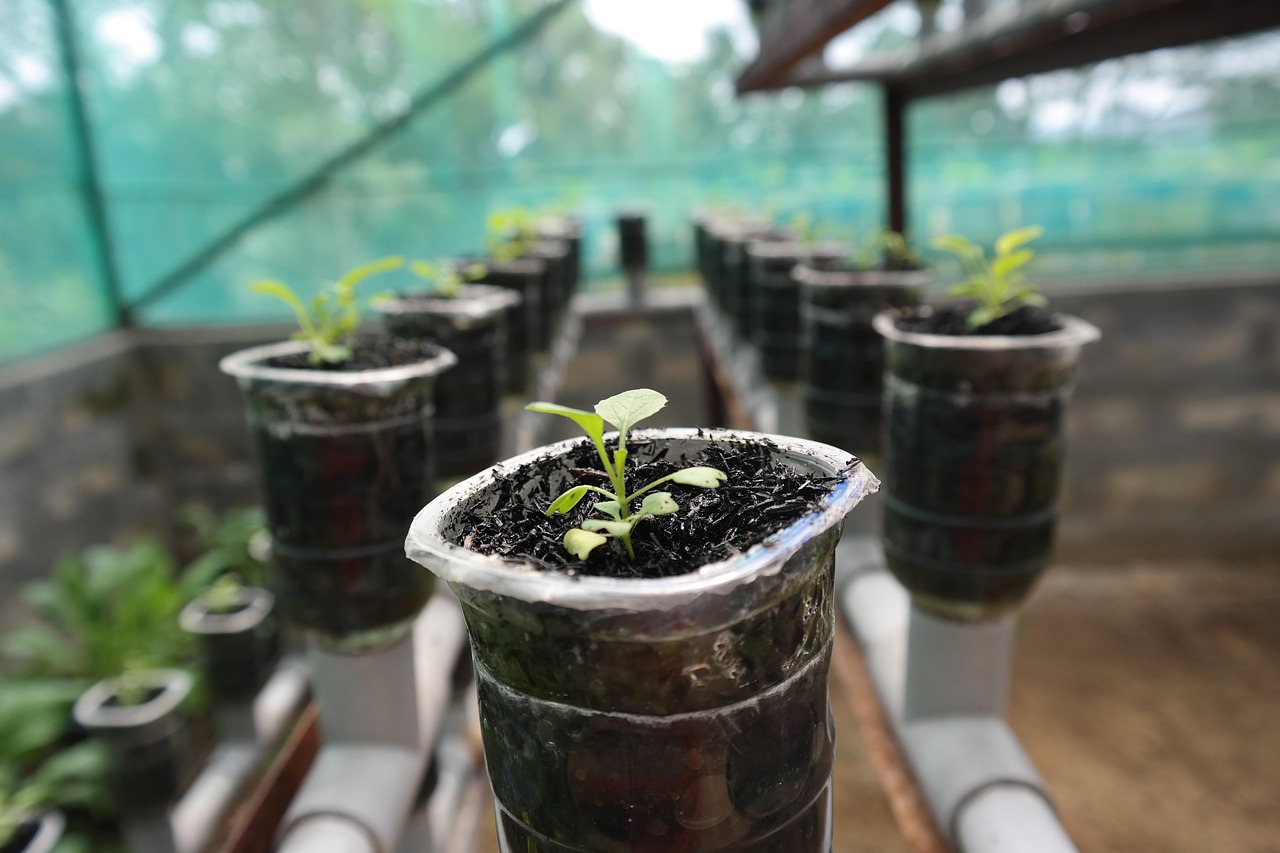Imagine growing fresh, healthy vegetables, herbs, or flowers without the need for soil. Sounds like something from the future, right? Well, hydroponic gardening makes this possible today. Hydroponic gardening is a soil-free growing method that uses water and nutrient solutions to nourish plants. It’s gaining popularity for its efficiency, sustainability, and ability to produce abundant crops in limited spaces. Whether you’re a seasoned gardener or a novice looking to experiment with a new growing technique, hydroponics opens up a world of possibilities for urban farming, small spaces, and even indoor gardens. Let’s dive into the basics of growing without soil and explore the world of hydroponic gardening.
What is Hydroponic Gardening?
Hydroponic gardening is the practice of growing plants in a water-based, nutrient-rich solution instead of soil. By delivering nutrients directly to the plant’s roots through water, this method eliminates the need for soil to supply essential minerals. The roots are supported by an inert medium, such as perlite or coconut coir, which allows them to absorb water and nutrients while remaining oxygenated. This technique enables plants to grow faster, more efficiently, and with fewer pests and diseases. Whether you’re cultivating leafy greens, herbs, or even strawberries, hydroponic systems provide an innovative alternative to traditional gardening.
Why Choose Hydroponics?
Hydroponic gardening offers several significant advantages that make it a popular choice for both beginners and experienced gardeners alike. Let’s take a closer look at some of the key benefits.
Faster Plant Growth
One of the most compelling reasons to choose hydroponics is the faster plant growth it offers. Since the plant roots have direct access to a nutrient-rich solution, they can absorb nutrients more efficiently than in traditional soil. This accelerated uptake results in healthier plants that grow faster, produce higher yields, and require less time to mature. Many hydroponic gardeners report faster harvests, making it an attractive choice for those looking to grow crops in a shorter period.
Space Efficiency
Hydroponic systems are ideal for gardeners with limited space. Whether you live in a small apartment, on a balcony, or in an urban environment, hydroponics allows you to grow plants vertically or in compact spaces. Space efficiency is a key benefit, as you can stack systems or use walls to support plants. This makes hydroponics a popular option for city dwellers and people with limited garden space, allowing them to grow food indoors or in small outdoor areas.
Less Water Usage
Unlike traditional soil-based gardening, hydroponic systems use significantly less water. The water used in these systems is recirculated, meaning it’s reused rather than wasted. This not only conserves water but also helps prevent overwatering, a common issue in traditional gardening. Hydroponic gardening is an excellent choice for regions facing water shortages or for anyone looking to reduce their environmental impact.
Types of Hydroponic Systems
There are several types of hydroponic systems, each offering distinct advantages depending on your space, plants, and gardening goals. Let’s take a closer look at some of the most popular systems.
Wick System
The wick system is one of the simplest hydroponic systems. It works by drawing nutrient-rich water from a reservoir to the plant roots through a wick material. This system doesn’t require a pump, making it ideal for beginners. However, it’s best suited for small plants or shallow-rooted crops due to its limited ability to provide oxygen to the roots.
Deep Water Culture (DWC)
In Deep Water Culture (DWC), plant roots are submerged in a nutrient-rich water solution that is aerated with an air pump. This system is perfect for plants that require consistent moisture, such as lettuce or herbs. DWC provides a continuous supply of oxygen to the roots, promoting faster growth and higher yields.
Nutrient Film Technique (NFT)
The Nutrient Film Technique (NFT) uses a thin film of water that flows over the roots of the plants, allowing them to absorb nutrients. This method is highly efficient and is often used for growing leafy greens and herbs. It requires a pump to keep the water flowing and ensures that the plant roots receive both water and oxygen for optimal growth.
Aeroponics
Aeroponics is the most advanced hydroponic system, where plant roots are suspended in the air and misted with a nutrient solution. This method maximizes oxygen exposure, resulting in rapid growth and high yields. While aeroponics is incredibly efficient, it requires precise control of the environment and is best suited for experienced gardeners.
How to Start a Hydroponic Garden
Getting started with hydroponic gardening is easier than you might think. Here are the basic steps to begin your own system:
- Choose your system: Decide which hydroponic system best suits your needs, space, and plant types.
- Gather materials: You’ll need a container or grow bed, a water reservoir, a pump (for some systems), tubing, and an air stone for oxygenation.
- Set up your system: Assemble the components according to your chosen hydroponic system’s design.
- Prepare the nutrient solution: Mix the appropriate nutrients for your plants and fill the water reservoir.
- Plant your crops: Select plants that are well-suited to hydroponics, such as lettuce, spinach, basil, or tomatoes.
Hydroponic Gardening Tips for Success
To ensure your hydroponic garden thrives, keep these tips in mind:
- Monitor nutrient levels: Regularly check and adjust the pH and nutrient levels in your system to ensure plants receive the right nutrients.
- Provide adequate light: Hydroponic plants often need artificial lighting, especially when growing indoors. Invest in grow lights to mimic natural sunlight.
- Maintain proper airflow: Good airflow helps prevent mold and pests from taking hold in your system. Use fans if necessary to circulate air.
- Clean your system regularly: To prevent algae growth and system clogs, clean your hydroponic system regularly and replace the nutrient solution as needed.
Summary
Hydroponic gardening is an innovative and efficient way to grow plants without the need for soil. With benefits like faster plant growth, space efficiency, and less water usage, it’s an ideal option for those looking to grow fresh produce in limited spaces or environments with poor soil. By choosing the right hydroponic system and following essential care tips, you can create a thriving garden that yields healthy, abundant crops year-round. Whether you’re growing herbs on your windowsill or cultivating a full-fledged indoor garden, hydroponics opens up new possibilities for gardeners everywhere.
Please like, comment, and share this article if you found it helpful and
informative.
For more news check out Big Town Bulletin News
For more from Big Town Bulletin check out Big Town Bulletin
Please like, comment, and share this article if you found it helpful and
informative.
For more news check out Big Town Bulletin News
For more from Big Town Bulletin check out Big Town Bulletin


